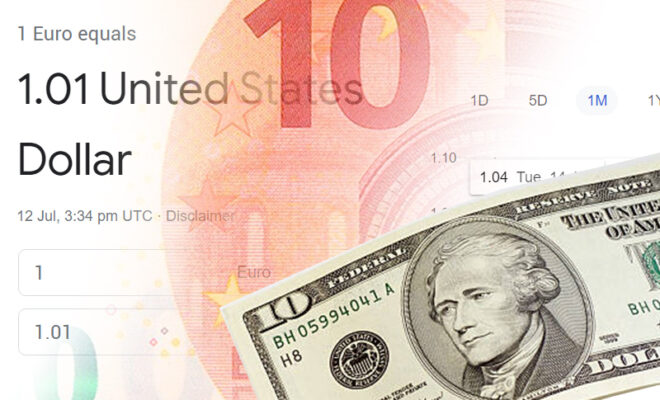Euro Comes Equal To The Dollar For The First Time In 20 Years

Both the rupee and the euro have fallen recently. Inflation and the Russia-Ukraine war have increased fears of a European recession. Here are the reasons & effects!
The price of the Euro, the unit of currency for the European Union, has decreased by nearly 12% this year, and for the first time in 20 years, it is now trading at a par with the US dollar.
The difference between the two currencies’ difference is less than one cent. The cost of the euro dropped to approximately $1.004 on Monday.
Because of inflation and a lack of energy supply as a result of the Russia-Ukraine conflict, fears of a European recession have grown more intense.
The sharp drop in the worth of the euro is the cause of this. 40% of the gas used in the EU before the conflict came from Russia. But suddenly things are different.
Efforts are being made by European nations to lessen their reliance on Russian gas and oil. Russia has also cut back on its gas shipments to some European nations at the same time.
It has reduced the amount of gas it sends to Germany via the Nord Stream pipeline by 60%. Europe is currently experiencing both an energy crisis and an economic slump.
In order to control inflation, the European Central Bank has hinted that interest rates will rise this month. The central bank of Europe is going to increase interest rates for the first time since 2011 at this time.
Inflation Height In Germany
8.6% is the inflation rate for the eurozone. The trade balance of Germany is negative for the first time since 1991.
This is due to the fact that import prices have grown as a result of rising oil prices and supply chain issues.
According to experts, numerous reserve banks, including the US Fed Reserve, have raised interest rates.
The pace of economic growth is also slowing down. This might keep the euro under even more pressure. As a result, investors can use the US dollar as a secure investment.
Interest rates were recently increased by 75 basis points by the US Federal Reserve, and they may rise again this month.
George Saravelos, head of FX research at Deutsche Global, predicted in a note last week that if both Europe and the US experienced a recession, the tendency toward the US dollar would intensify.
According to him, the euro might cost between $0.95 and $0.97. Although this may be good news for Americans who want to go to Europe, it won’t be good news for the stability of the global economy.



